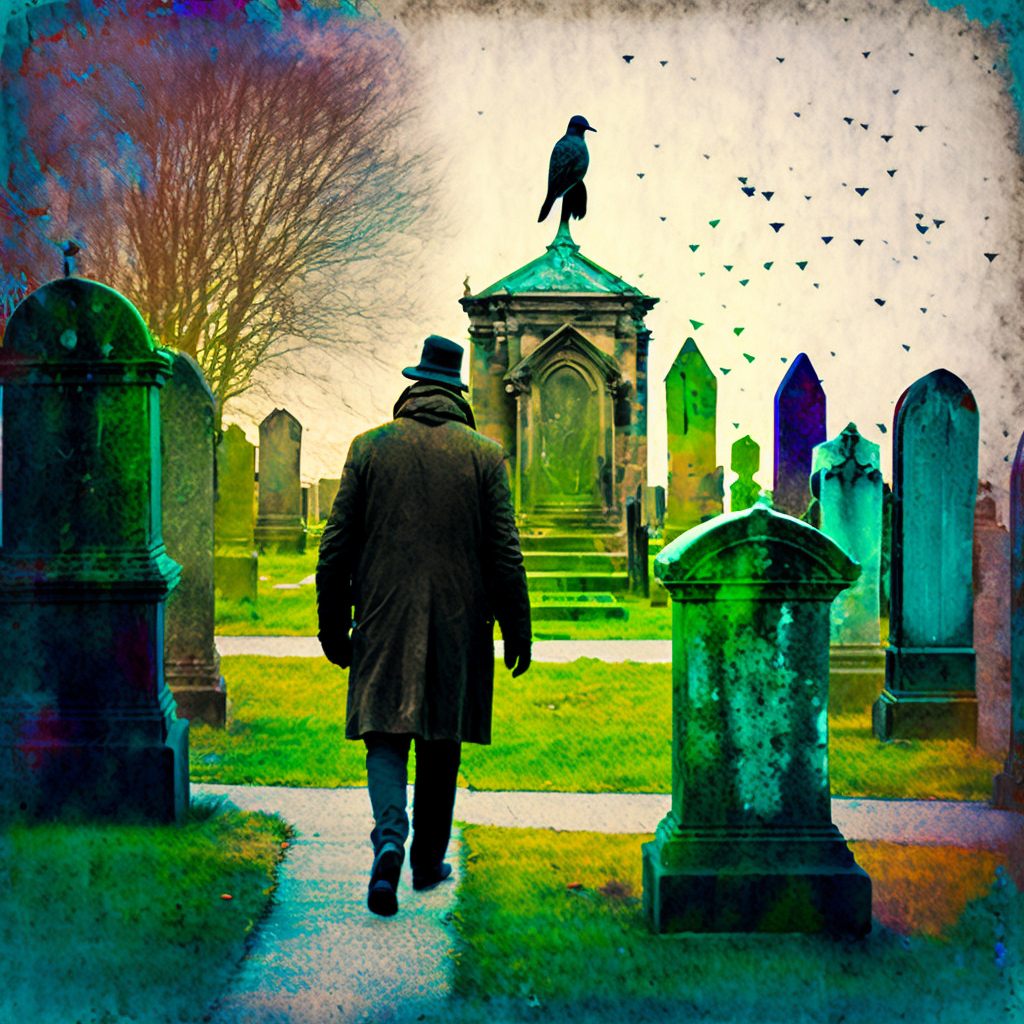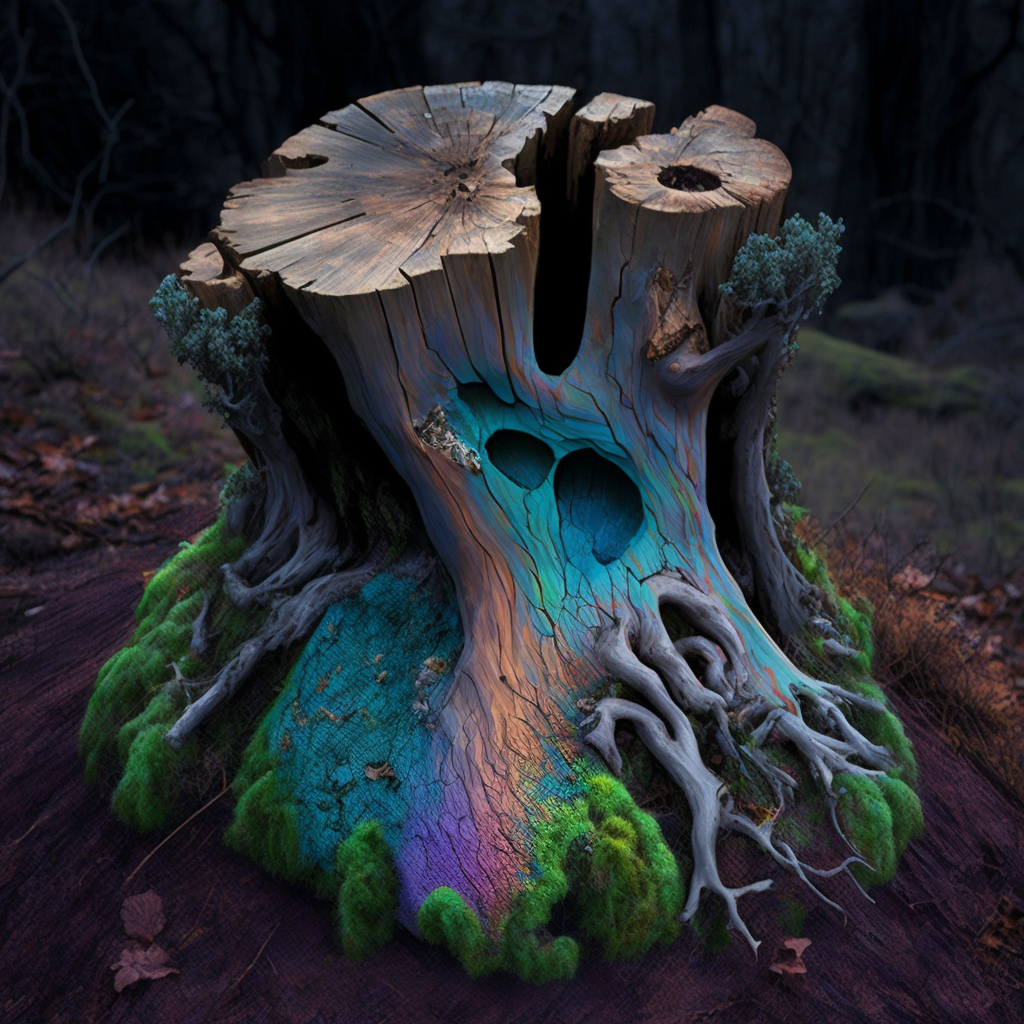Graveyard Shift
A graveyard path twists into an exploration of childhood alienation.

"The ruins of Time build mansions in Eternity." – William Blake
I want an iridescence that is off the charts, like the multicoloured shimmer of a peacock’s plumage, or a hummingbirds’ sheen. Such hues are absent here in Norfolk, on a grey afternoon as I proceed to take my walk through Earlham Cemetery.
A longing for something different permeates my soul. Bangs against the walls of my cranial cavity, all too often echoing out into symptoms, nervous dispositions, neurotic traits. But I want something more than what modern medicine can give me, and all our makeshift apparati—a cure more than a tablet, an uprooting more than a cheap facade.
This cemetery gives pause from the usual traffic and travails of mortals like us. Nature is a convenient buffer, an attempt to put my thoughts in order. A smattering of rain now blends with the odd gust of wind, from grey-white ominous skies.
I shouldn’t grumble though, as on entrance to the cemetery, a giant oak stands as if to greet me, its half-visible roots spread out around it, forking out in gnarled complexity across the main path ahead. The patch of ground to my left and at the base of the tree is bestrewn by weeds, brambles and stinger-nettles, and a broken up cluster of gravestones that appear to rebel against their usual neatly aligned rows. These slabs of arch-shaped concrete are ancient, from the 1800s, bespattered with moss and the epitaph type barely legible. One is whole, but slanted from its original vertical position, and another two are broken into two or three pieces, great chunks of stone half-piled on top of each other, as elegantly placed as discarded litter.
I studied Fine Art, and was never destined for the nine-to-five workaday life. When you learn about its rich history, from Renaissance bigwigs like Michelangelo and Da Vinci, to the plethora of ism’s that follow; futurism, modernism, postmodernism… With this back-catalogue in mind, modern life strikes one as mundane.
High Renaissance versus Postmodern, take your bets. Michelangelo’s Sistine Chapel, three to one? Damien Hirst, double or nothing? Whatever merit one sees in Hirst’s plethora of animal corpses suspended in formaldehyde is of course subjective, but what I do value about them personally, more so than the actual works themselves, are the titles. ‘The physical impossibility of death in the mind of someone living.’ That’s poetic for sure. Contemplating the deep void of the beyond, when our hearts stop beating, and we end up here, buried up to our eyeballs in soil.

In death’s landscape, what can revivify? Regenerate? Rebirth? Fungi, perhaps. Further up the slight ascent of the path, a dead oak tree stands, branches cut to stumps. Fungi grows in clusters along the trunk, with great slabs at the base. My thoughts turn to the broken gravestones of my entrance, piled on top of each other. Fungi is a fascinating thing, decomposing dead matter in order to replenish our ecosystem. And then mushrooms, as their spore-bearing, fruiting body, edible, and in the case of magic mushrooms, potentially life-transforming.
Maybe that different thing I long for can only really be—morbid as it sounds—satisfied in death. Or rather, beyond death. This doesn’t mean I’m contemplating suicide, you understand. It just means that I’m cynical about human being’s capacity to affect some kind of paradise here on earth. Maybe the best we can hope for is a perpetual renaissance, where innovators continue to make things anew. But look at us! It’s not like we can make a clean slate, with all the damage we’ve done and continue to do to one another and the world around us. At best, we are walking contradictions, moving forward on a planet that is circular.
My parents probably used to think I had Avoidance Syndrome. Identity Crisis Syndrome. Anti-Norm Syndrome.
But it’s hard to forge an identity in today’s world. Same as when I went to school, those macho-wankers that got into fights in the playground, the top-grader socialites on the other end. They at least had identities. And even those that sit more in the middle, of average ability, not so driven academically but happily social and able to get on in life, they tick the Norm box too.
I was the kind of misfit that either kept my head down, or daydreamed; in mixed sets, some high, some low, too nervous to get in with the mischief-makers or the high-flyers respectively. Art was the only subject that sang for me, because I could use my imagination, because it wasn’t prescribed, per se. There was an unknown element to it, the spontaneous, unconscious, nuanced, creative urge to make things anew.
I remember during my GCSE art exam, I got to listen to music on my stereo cassette player, something no other exam allowed. Music and art combined, and I began listening to the Manic Street Preachers and Radiohead. The former were punk with intelligence, and not just any old intelligence, but one acquired through the kind of authors I enjoyed, like Nietzche, Orwell and Camus. A mini-renaissance exploded in my mind, otherwise on survival-autopilot, avoiding bullies, absorbing the National Curriculum, and envying the chatty well-to-do types.
To my right is a memorial plinth. It’s about six metres in height, the top half a statue of what on first glance looks like a woman with a bonnet, Florence Nightingale-esque, but on closer inspection, turns out to be a knight. Around the plinth are lists of names, soldiers, mostly in their twenties and thirties, that died serving their country. Accompanying this, slogans such as, ‘Take unto you the whole armour of God,’ ‘In memory of the brave,’ and ‘Endureth hardness as a good soldier of Jesus Christ.’
What is one to make of all this death and honour? Are all these soldiers worthy of such veneration because they fought under the Christian banner? Is the linking of God to war just a convenient way of legitimizing the latter? I don’t think it’s so simple, but rather a mixture of the brutality of humans and the measures used to deal with ourselves. I mean, sure, people can't just stand by when their country is being attacked, but what of negotiation, and individuals challenging the decisions of their governments? In a black and white world, gravestones literally seem to speak of the grey area.

***
I first developed an interest in writing in my early twenties whilst at university studying Fine Art. Attempts at poetry led to attempts at fiction. Ever since then, my library has expanded, and during Lockdown, I joined one of Daniel Pinchbeck’s virtual writing workshops, which inspired me through critical dialogue, assignments and feedback to improve my work. I am trained as a social worker and have worked in the mental health field for the past decade. This has partly inspired a semi-autobiographical novel I have now self-published which is available to preview and purchase on amazon, entitled ‘The Undiagnosable Patient’.